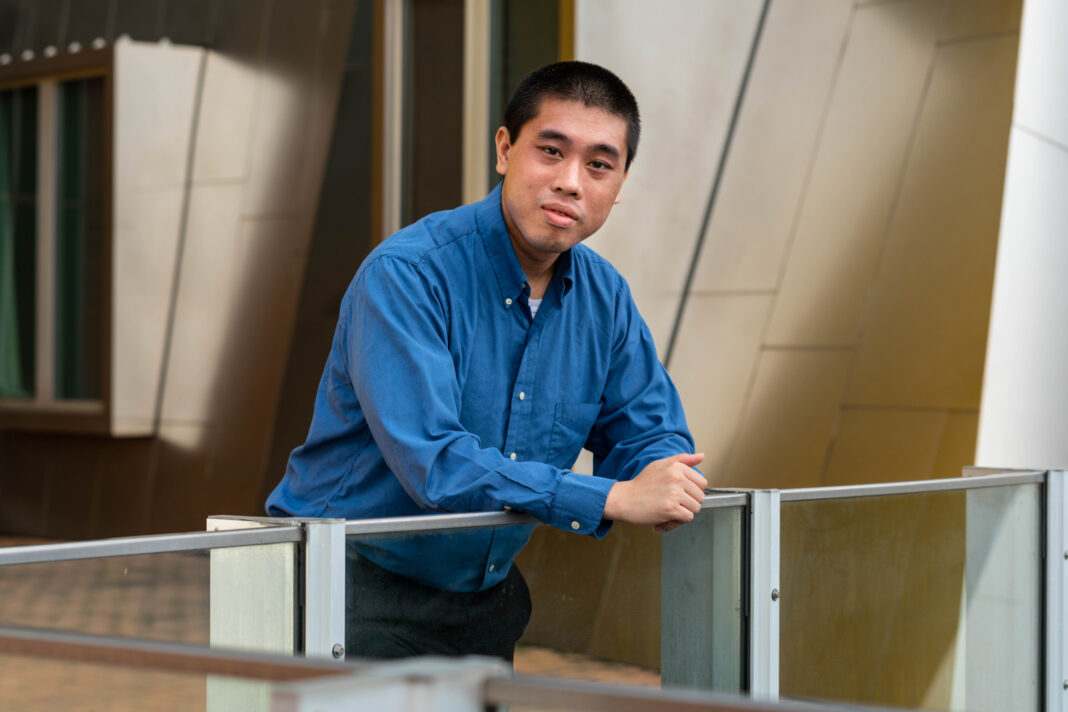In Short:
German philosopher Friedrich Nietzsche’s concept of “invisible threads” refers to hidden connections in networks. Julian Shun, a computer scientist at MIT, designs efficient algorithms to analyze these connections, aiding in tasks like route optimization for delivery drivers and fraud detection. By using parallel computing, he makes processing vast data faster and easier for others, focusing on dynamic problems to ensure practical applications of his research.
The philosophical musings of German philosopher Friedrich Nietzsche suggest that “invisible threads are the strongest ties.” These “invisible threads” can symbolize various interconnected elements, such as the homes along a delivery driver’s route or the complex transactions within financial or social networks.
Julian Shun, a prominent computer scientist, explores these intricate and often hidden connections through the use of graphs. In graph theory, objects are depicted as points, or vertices, while the relationships between them are represented by line segments, or edges.
As a recently tenured associate professor in the Department of Electrical Engineering and Computer Science, Shun specializes in designing graph algorithms aimed at solving real-world problems, such as determining the shortest routes for delivery drivers or identifying fraudulent transactions within financial networks.
However, with the exponential growth of data, networks can now consist of billions or even trillions of objects and connections. To address this challenge, Shun develops high-performance algorithms that utilize parallel computing, enabling rapid analysis of extremely large graphs. Recognizing the complexities of parallel programming, he also creates user-friendly programming frameworks that assist other researchers in constructing efficient graph algorithms.
“When searching for information on a search engine or navigating a social network, prompt results are essential. Similarly, in the context of identifying fraudulent transactions in a banking system, real-time detection is crucial for minimizing potential damages. Parallel algorithms can significantly expedite this process by harnessing additional computational resources,” notes Shun, who also serves as a principal investigator at the Computer Science and Artificial Intelligence Laboratory (CSAIL).
Utilization of Algorithms in E-Commerce
These advanced algorithms are frequently employed in online recommendation systems. For instance, when a user searches for a product on an e-commerce platform, they are often presented with a list of related items that can be added to their cart. This functionality is driven by graph algorithms that exploit parallelism to quickly identify related products within vast user and product networks.
Path to Programming
During his initial year of study, a friend encouraged Shun to enroll in an introductory computer science course, which ultimately led to a profound interest in programming and algorithm design. Reflecting on this pivotal moment, he states, “I fell in love with programming and designing algorithms. I switched to computer science and never looked back.”
This self-paced computer science class allowed Shun to independently master most of the material. He found the logical nature of algorithm development appealing, coupled with the immediate feedback loop provided by computing tasks—enabling him to see the correctness of his solutions in real time.
“Building solutions in programming that serve a practical purpose has always fascinated me,” he remarks.
Following graduation, Shun gained industry experience but soon realized his ambition lay in academia, where he could delve into subjects that genuinely interest him.
Integration of Theory and Application
Shun pursued graduate studies at Carnegie Mellon University, concentrating on applied algorithms and parallel computing. His academic journey revealed a gap between theoretical algorithms and practical programming courses, motivating him to innovate research that fused the two disciplines. Parallel algorithms emerged as his ideal focus due to their necessity for real-world applications, as he explains: “In parallel computing, the objective is to enhance practical speed, making algorithm efficiency critical.”
At Carnegie Mellon, Shun was introduced to graph datasets, where interconnected objects are represented by vertices and edges. The practical applications and challenges presented by these datasets captivated him, driving his desire to create efficient algorithms.
Upon completing a postdoctoral fellowship at Berkeley, he sought a faculty position and ultimately joined MIT, where collaborations with MIT faculty on parallel computing research had already begun.
In one of his initial endeavors at MIT, Shun collaborated with Saman Amarasinghe, a fellow professor and CSAIL member specializing in programming languages and compilers, to develop a high-performance programming framework for graph processing known as GraphIt. This framework, which generates efficient code from high-level specifications, achieved performance approximately five times faster than existing alternatives.
“This collaboration proved immensely productive. The powerful solution we produced would not have been possible had I worked alone,” he acknowledges.
Shun also broadened his research scope to include clustering algorithms, designed to group related data points. Together with his students, he develops parallel algorithms and frameworks capable of solving complex clustering tasks, which find applications in areas like anomaly detection and community detection.
Dynamic Algorithmic Challenges
Recently, Shun and his team have focused on dynamic algorithms that adapt to changes in graph datasets over time. Given the immense scale of data points—often in the billions or trillions—executing an existing algorithm from scratch after a minor alteration can be computationally prohibitive. To address this, Shun and his students have engineered parallel algorithms that simultaneously process multiple updates, enhancing efficiency while maintaining accuracy.
Nevertheless, the dynamic nature of these challenges complicates research, as the limited availability of dynamic datasets necessitates the generation of synthetic data, which may not accurately represent real-world scenarios and could affect the performance of their algorithms.
Ultimately, Shun’s objective is to create dynamic graph algorithms that are both efficient and theoretically robust, ensuring their applicability across a wide array of contexts.
Looking ahead, Shun anticipates an intensified focus on dynamic parallel algorithms, as datasets continue to expand in both size and complexity. Additionally, advancements in computing technology will pose new challenges, necessitating the development of algorithms optimized for novel hardware capabilities.
“The allure of research lies in the opportunity to tackle unexplored problems and make meaningful contributions to society,” Shun concludes.





